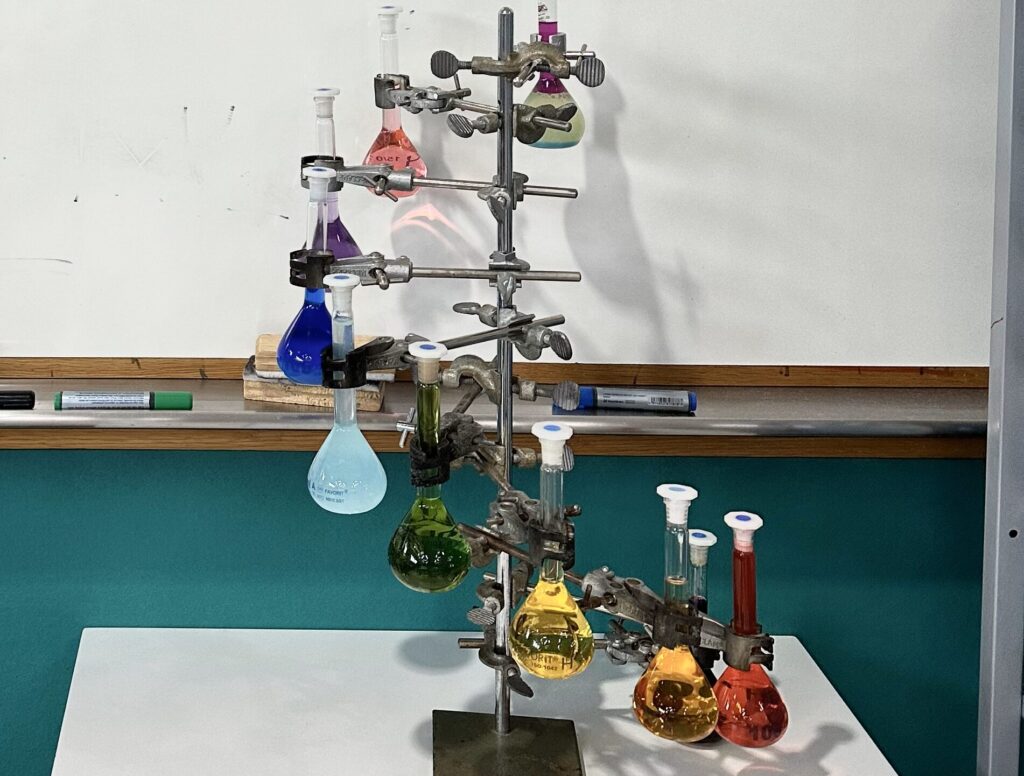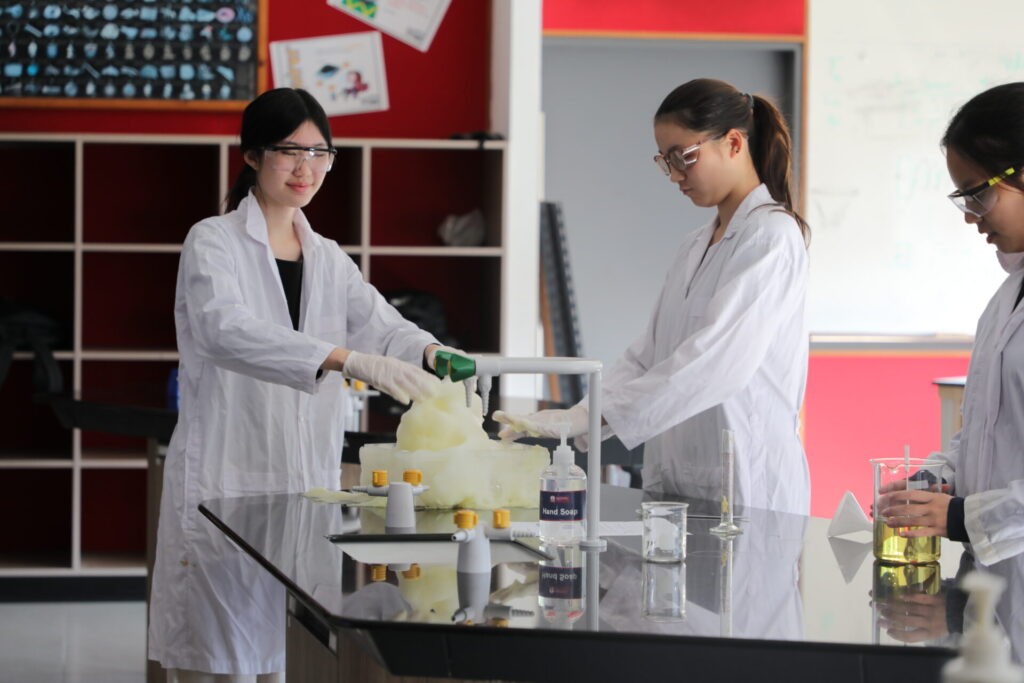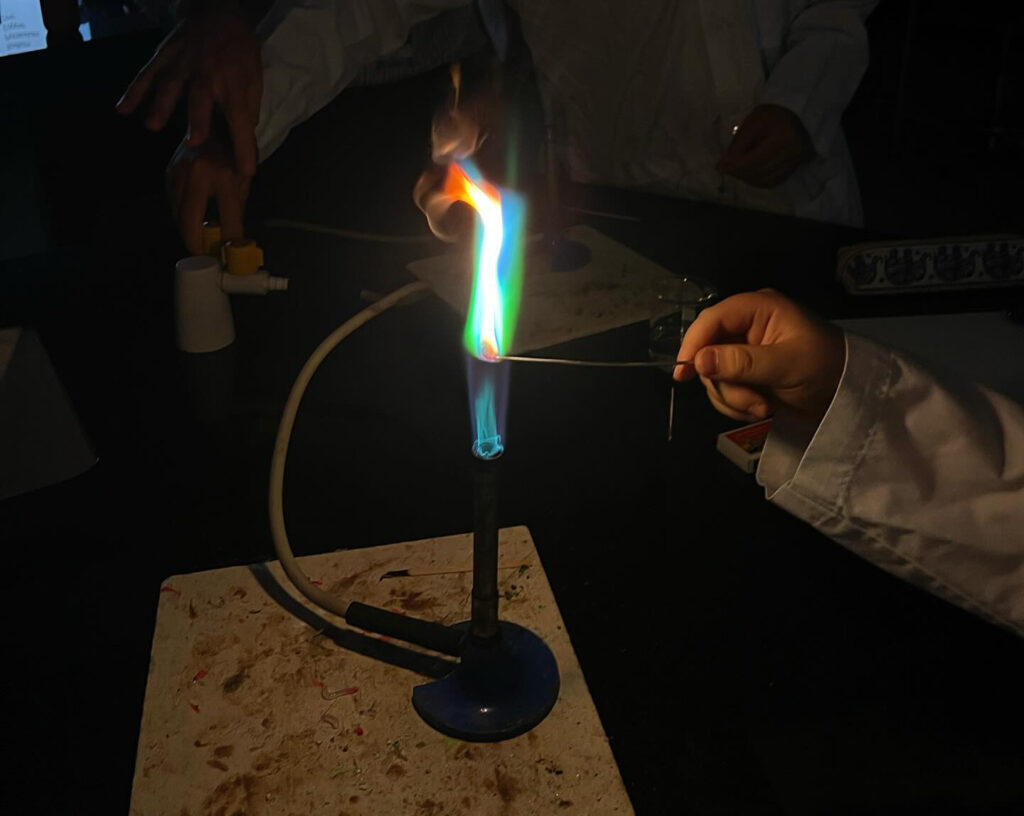Traffic Light Experiment
Session focus: Reversible Redox Reactions!
Today, we introduced our younger secondary students to the concept of redox reactions using the traffic light experiment as a fun analog!
In this experiment, we used a mixture of glucose, indigo carmine, and sodium hydroxide to replicate the three colors of a traffic light: red, yellow, and green. We demonstrated how the interaction of these substances, plus oxygen, resulted in a sequential colour change.
• Reduced State (Yellow):
• When left to stand, no oxygen is mixed in and the glucose is left to reduce the indocarmine, turning the solution yellow.
• Partially Oxidized State (Red):
• When shaken, oxygen is mixed and the solution is slightly oxidised, turning red.
• Fully Oxidized State (Green):
• When shaken roughly, more oxygen is mixed in and the solution is fully oxidised, turning green.
Lesson Materials
• Glucose
• Distilled water
• Sodium Hydroxide
• Indigo carmine indicator
• Conical Flasks
• Spatula
• Beakers
Lesson Plan:
1. Let the students prepare the following solutions:
Solution A: 6g glucose + 200ml distilled water + 40ml Sodium Hydroxide
Solution B: Indigo carmine + 125ml distilled water
2. Pour the alkaline solution of glucose (Solution A) into the indigo carmine solution (Solution B) and observe change
in colour
3. Let the solution stand for 5 minutes
4. Shake the solution to reverse the reaction (oxidise the solution)!


